Live! Home | Live! Event Types | Live! Awards | Past Events
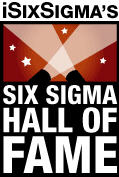 The Six Sigma Hall of Fame™ recognizes people who have made significant and lasting contributions in the Lean Six Sigma industry. These individuals have consistently fueled corporate growth and shareholder value through the use of Lean Six Sigma during their career. They have commanded the respect and admiration of their peers for their extraordinary service to the industry.
The Six Sigma Hall of Fame™ recognizes people who have made significant and lasting contributions in the Lean Six Sigma industry. These individuals have consistently fueled corporate growth and shareholder value through the use of Lean Six Sigma during their career. They have commanded the respect and admiration of their peers for their extraordinary service to the industry.
2011 Hall of Fame Inductee:
Timothy C. Tyson
2010 Hall of Fame Inductee:
Robert Galvin
2009 Hall of Fame Inductee:
Bill Smith
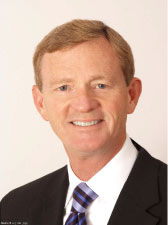 Timothy C. Tyson
Timothy C. Tyson
2011 Six Sigma Hall of Fame Inductee
Timothy Tyson’s remarkable corporate career spans nearly 30 years in the pharmaceutical industry. His expertise in leadership and management is internationally recognized. Currently, he is executive chairman and CEO of Aptuit. From 2002-2008, Mr. Tyson served as COO, President and CEO of Valeant Pharmaceuticals International. During this period, sales grew 69 percent and earnings increased 135 percent. He led a major restructuring of the company based on Six Sigma principles and established a highly effective Research and Development capability, which developed a best-in-class epilepsy compound and a promising pro-drug for hepatitis C, both in Phase III.
Prior to joining Valeant, Mr. Tyson ran multiple divisions for GlaxoSmithKline and was a member of the Corporate Executive Team, reporting to the CEO. During his 14-year tenure at GlaxoSmithKline, he was President, Global Manufacturing and Supply and ran Glaxo Dermatology and Cerenex Pharmaceuticals. Mr. Tyson was also responsible for managing all sales and marketing for GlaxoWellcome’s U.S. operations, where he launched 32 new products, eight of which reached sales of greater than$1 billion. From 1980-1988, Mr. Tyson held executive positions in commercial, technical operations and R & D, at Bristol-Myers. Prior to his tenure at Bristol-Myers, he was a manufacturing manager for Procter & Gamble. He served on active duty as an officer in the United States Army from 1974-2979 and spent 14 years in the United States Army Reserves.
Mr. Tyson is a 1974 graduate of the United States Military Academy at West Point. While on active duty at Ft. McClellan, AL, he earned a Master of Public Administration, in 1976, and a Master of Business Administration, in 1979, from Jacksonville State University. In 2002, Mr. Tyson received a Bicentennial Leadership Award from the United States Military Academy at West Point and was named 2007 Alumnus of the Year at Jacksonville State University.
He has served on the board of directors for Valeant Pharmaceuticals International; the Pharmaceutical Research and Manufacturing Association (PhRMA); BICOM; on the CEO Roundtable for the University of California at Irvine; on the Dean’s Executive Forum at Cal State Fullerton; the CEO Council on Cancer; the Health Sector Advisory Board at Duke University; the Leadership Forum of the International Society of Pharmaceutical Engineers ad as a visiting lecturer at Cambridge University. Mr. Tyson has served on the board of directors for non-profit organizations in Raleigh-Durham, N.C., and Orange County, Calif., and with the United Way.
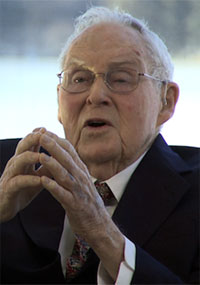 Robert Galvin
Robert Galvin
2010 Six Sigma Hall of Fame Inductee
Robert Galvin joins the first inductee, Bill Smith, who came up with the concept of Six Sigma to standardize the way defects are counted while he was a senior scientist at Motorola. Mr. Galvin was then Chairman and CEO of the company.
The son of one of the two founding brothers of Galvin Manufacturing Corp., later renamed Motorola, Mr. Galvin charged the company to raise the bar on quality – across the board. In 1980, he launched a four-point plan to secure Motorola's renewal and growth. The plan included increasing global competitiveness, adopting a participating management culture, creating a company-wide training center, and improving quality tenfold within five years.
Shortly thereafter, in 1985, Mr. Smith, who had realized that the company needed a standard metric of quality that could be used across all its manufacturing processes, came to Mr. Galvin to promote the notion of having a "six sigma" tolerance in terms of defects so that even shifts in process performance would not produce defects. After listening to Mr. Smith's ideas, Mr. Galvin directed Jack Germain, Motorola's first corporate vice president of quality, to build on them. And Six Sigma was born. In 1987, the company trademarked the term, making it official.
Bill Smith
2009 Six Sigma Hall of Fame Inductee
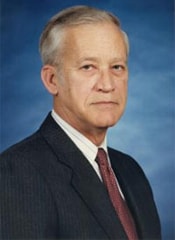
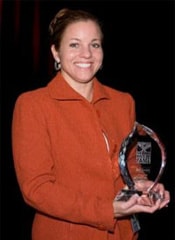
(L) Bill Smith, (R) Marjorie Smith accepting award on behalf of her father, Bill Smith
In 1986 Bill Smith – then a senior scientist at Motorola – introduced the concept of Six Sigma to standardize the way defects are counted. In Smith's words, "We recognized that the issue was not building a single part with one characteristic, it was building a product with thousands of parts. If you reduce the total defects, you increase customer satisfaction and reduce costs."
Smith is credited with bringing Six Sigma to industry, and is widely known as the "Father of Six Sigma." At Motorola, Six Sigma provided the key to addressing quality concerns throughout the organization, from manufacturing to support functions. The application of Six Sigma was instrumental in Motorola's winning the Malcolm Baldrige National Quality Award in 1988.
Since then, the impact of Six Sigma on improving business performance has been dramatic and well documented by organizations around the world.
